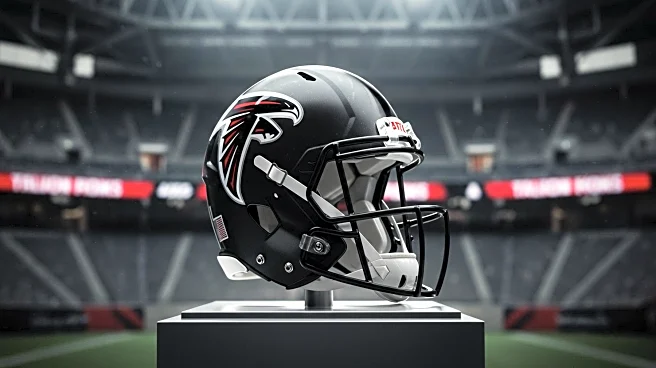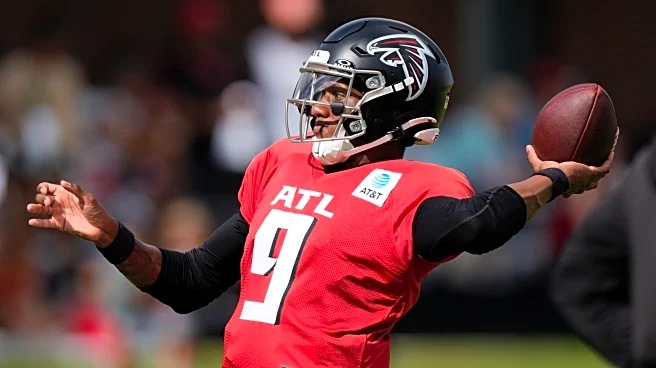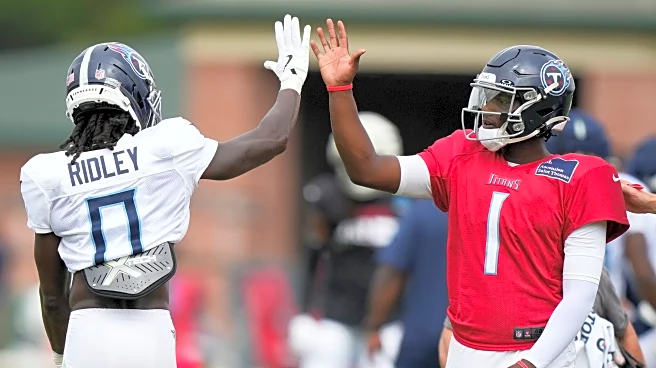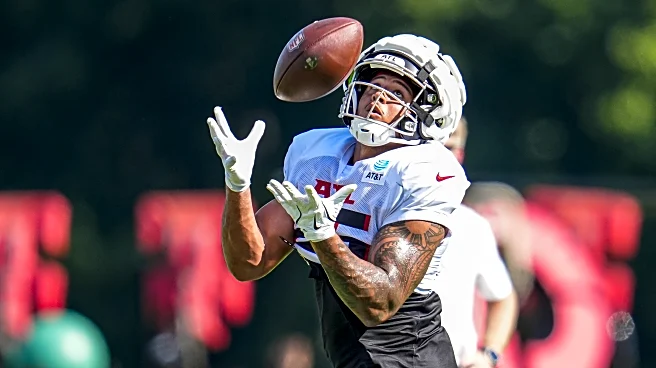What's Happening?
A local television station in Savannah, WTOC 11, made a notable typographical error during a broadcast involving Atlanta Falcons quarterback Michael Penix Jr. The station mistakenly replaced the 'X' in Penix's last name with an 'S', leading to an unintended and inappropriate word. This incident occurred following a joint practice brawl between the Falcons and the Tennessee Titans, where Penix was involved. Michael Penix Jr., who was drafted by the Falcons with the No. 8 overall pick in 2024, has recently taken over as the starting quarterback, succeeding veteran Kirk Cousins. The error has drawn attention due to Penix's rising profile in the NFL.
Why It's Important?
The typographical error highlights the challenges and potential pitfalls of live broadcasting, especially when dealing with high-profile sports figures. For Michael Penix Jr., the incident underscores the increased scrutiny and public attention that comes with being a starting quarterback in the NFL. The mistake also serves as a reminder of the importance of accuracy in media reporting, as errors can quickly become viral and impact public perception. For the Atlanta Falcons, maintaining a positive image of their players is crucial, especially as they aim to build a successful team around Penix.
What's Next?
While the typographical error is likely to be a temporary embarrassment for WTOC 11, it may prompt the station to review its editorial processes to prevent similar mistakes in the future. For Michael Penix Jr., the focus will likely return to his performance on the field as he prepares for the upcoming NFL season. The Falcons will be keen to support their quarterback and ensure that such distractions do not affect team morale or Penix's development as a player.
Beyond the Headlines
This incident also touches on broader themes of media responsibility and the impact of digital media in amplifying errors. In an age where information spreads rapidly online, even minor mistakes can have outsized consequences. The situation serves as a case study in crisis management for media outlets and highlights the need for robust fact-checking and editorial oversight.













